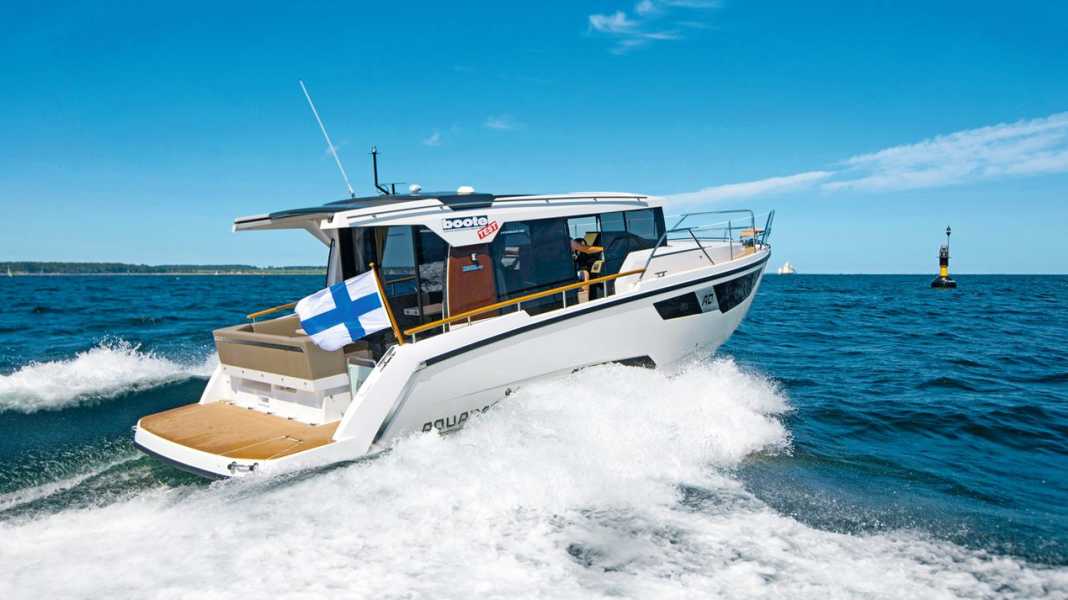
Anyone who wants to travel, not only inland but also at sea, naturally relies onRough water suitability and speed. Attributes that our test boat Aquador 35 AQ on the Baltic Sea off Laboe.
At around 4 to 5 Beaufort and the steep, short choppy waves of the Baltic Sea as well as the stern sea of a Kümos, the heavily chined-up hull sets in softly at cruising speed at around 25 knots without rattling noises or pitching. Splash water is also kept within limits. And if any does get on the windscreen, it ensures a smooth ride.Three solid wipers for a clear view.
Exemplary: the windscreens can be heated, which guarantees a clear view, especially in the transitional period with high humidity.
We perform our other test manoeuvres in a more sheltered corner and determine the ride values.The maximum speed measured here is almost 36 knots. At this speed, a few litres of diesel (2.88 l/sm) naturally run through the fuel line. If you reduce your speed to around 25 knots, you will glide most economically and then reach your destination.with one tank of petrol (just under 600 litres) for around 205 nm plus 15% reserve, which is quite reasonable for a 35-foot class cruising boat. On canals are easilyRanges beyond 500 nm inside.
As is usual with boats with a deep V-hull, our test boat also dances back and forth (yaws) when travelling slowly, which has to be compensated for from time to time.
With increasing speedimproves directional stability something else. From around 1600 rpm, the nose rises and lowers again automatically at just under 3000 rpm. The foresight remains halfway intact during this transition phase, but it is recommended,at low sliding speeds insert the trim tabs and use them to push down the bow.
